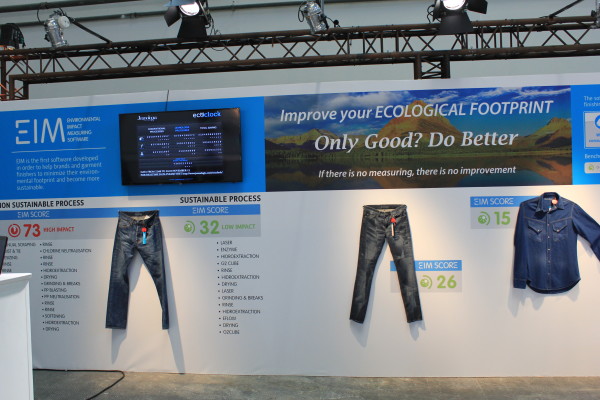
You Can’t Manage What You Don’t Measure: Jeanologia Provides a Solution
What do you get when you cross a global fiber supplier with a leading laundry consultancy? A match made in sustainability heaven.
Jeanologia and Lenzing’s cellulosic fiber, TENCEL®, have worked together for more than 20 years and the Spanish firm’s product manager, Begoña García, has said a relationship of that caliber is unique to the industry.
“TENCEL® appeared in the garment finishing industry—where traditionally cotton denim is the king of the category—very strongly and with a high potential. However, due to their unique characteristics, TENCEL® fabrics needed different processing. Jeanologia helped TENCEL® by giving support to weavers, manufacturers and garment finishers, teaching them how to achieve best results with TENCEL® garments,” offered García, explaining the backstory of how the two first came to work together.
She added, “Our business relationship has grown with the market and together we have worked on many interesting projects; some of them very technical and some of them a bit more creative.”
For instance, the two teamed up to launch 4S, a men’s and women’s collection based on the core four of softness, stretch, science and sustainability, which made its debut at the most recent edition of Kingpins Amsterdam
“Lenzing has the knowledge of the fiber; Jeanologia has the experience in finishing. We also share a philosophy and have a clear orientation to sustainability. So bringing both together we can bring huge innovation into the denim industry,” García continued. “I think there are a lot of good things that we have done together, but the most important I think is to keep generating interest, showing the capabilities of the fiber not just from a technical point of view but also from a fashion perspective.”
Improving denim production efficiency is a key area of focus for Jeanologia. The firm’s EIM software (Environmental Impact Measuring) was a finishing industry first when it launched in 2011, developed specifically to provide laundries and garment finishers with a tool that helps them to build more sustainable processes.
“EIM creates a picture of where you are in a defined moment in comparison with others and tells you if you are good (green scores), if you still have some room to improve (orange) or if your production has an unacceptable output, always from an environmental prospective,” García said. “This information is key to be able to identify areas of improvement, as we used to say: if there is no measurement, there are no improvements.”
Currently, brands such as Jack & Jones and H&M are using EIM in their production to evaluate and optimize their water, energy and chemical consumption, and García said feedback from the industry has been “very positive.”
“For the first time you can really quantify water and energy usage of one complete season,” she said. “The use of EIM encourages laundries to improve their scores and one very important point is that all measurements are done using the same criteria and using the same language no matter where there garments are produced.”
Q&A
Carved in Blue: Why should laundries invest in sustainable technology?
Begoña: Laundries should invest in sustainable technologies because there is no other way to produce in the near future. Those not introducing technologies and sustainable production practices will be, very soon, not able to produce. Firstly because they will not be competitive, and second, there will not be any buyer ready to buy product showing bad EIM scores.
Carved in Blue: What is the biggest roadblock preventing more denim laundries from adopting more sustainable practices?
Begoña: This is a very traditional industry and the introduction of sustainable practices means a mind change as well. I would say this is the most difficult way. And here again is where EIM can be a real ally to overcome this difficulty.
Carved in Blue: If a laundry should change just one aspect of their production to make it cleaner, what should it be?
Begoña: Mentality. From here, it is easy to move forward and improve day by day. As mentioned before, we are leaving a new industrial revolution and the opportunities are huge, but we will be only able to profit them if we are able to think differently.”
Carved in Blue: What was your first impression of TENCEL® in denim?
Begoña: I have to confess that I have a personal weakness for TENCEL® denim. I love the feel, the unique softness and the comfort of wearing TENCEL® denim garments, even when TENCEL® is just a small part of the blend. Also, the possibilities in terms of look by using Jeanologia technologies are amazing. You can see this in the last two denim collections we developed together with Lenzing. I would like to have them all in my wardrobe!
Carved in Blue: In general, why do you think the denim industry has been so accepting of TENCEL®?
Begoña: Many reasons, but probably the two more important are their environmental benefits and the capability of TENCEL® to keep the cotton look and improved wearability.
Carved in Blue: What does “carved in blue” mean to you?
Begoña: The possibility of being informed about the most important novelties and innovations in denim in a smooth way.






